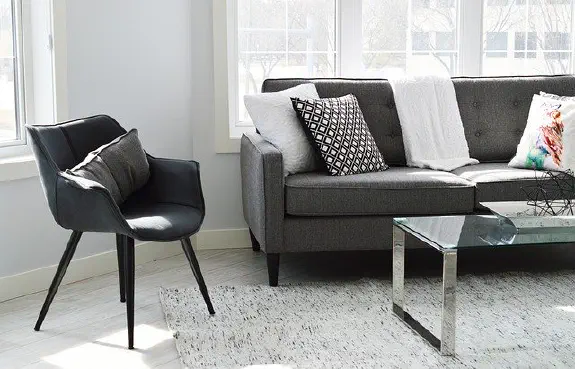Blending modern and traditional furniture in a single space may seem like a design challenge, but when done right, it can result in a uniquely timeless, elegant, and personal interior.
This harmonious fusion, often called transitional design, allows you to enjoy the best of both worlds: the comfort and warmth of classic décor and the sleek lines and minimalist appeal of modern trends.
In this guide, we'll explore how to successfully mix modern and traditional furniture in your home without creating visual chaos, offering practical tips, room-by-room inspiration, and smart styling advice.
Understanding the Two Styles
Traditional Furniture
Traditional furniture draws on classic European design, particularly from the 18th and 19th centuries. Key characteristics include:
- Ornate detailing and rich wood finishes (mahogany, cherry, oak)
- Curved lines and decorative carvings
- Upholstery in floral, damask, or velvet fabrics
- Symmetrical layouts
Modern Furniture
Modern design emphasizes simplicity, function, and clean geometry. Its features include:
- Straight lines and minimal ornamentation
- Materials like glass, metal, engineered wood
- Neutral or bold solid color palettes
- Open, airy spaces
Why Blend Modern and Traditional?
Mixing styles adds visual interest, timeless appeal, and allows personal expression. If you love sleek forms but also treasure vintage pieces, blending styles offers flexibility.
It's also ideal for homeowners who want affordable furniture solutions that evolve with their lifestyle.
Tips for Blending Modern and Traditional Furniture
Start with a Neutral Foundation
Use soft tones like beige, grey, or white to let both furniture styles stand out without clashing.
Use One Style as the Anchor
Decide on a dominant base—traditional or modern—and layer in accents from the other style.
Mix Materials Thoughtfully
Pair rustic wood with acrylic, or modern metals with classic leathers for contrast and cohesion.
Keep Color Palettes Cohesive
Unify the room by repeating similar hues across modern and traditional elements.
Create Balance with Symmetry and Proportion
Use matching lamps, rugs, or balanced spacing even if furniture styles differ.
Layer Textures for Depth
Use plush textiles and rich surfaces to soften modernity and refresh older pieces.
Room-by-Room Styling Ideas
Living Room
Pair a classic leather sofa with a minimalist side table, or place abstract art above a vintage mantle. Try affordable furniture to experiment without overspending.
Bedroom
Combine an antique headboard with modern nightstands and solid-color bedding. Ideal for cozy downtime, streaming, or light online gaming.
Dining Room
Mix a farmhouse table with modern chairs, and hang a geometric chandelier above an ornate sideboard.
Home Office
Use a vintage desk with a modern ergonomic chair. This is the ideal setup for a cosy home office that’s both functional and inspiring.
What to Avoid When Mixing Styles
- Overcrowding: Don’t overload the space with too many clashing elements.
- Clashing finishes: Keep wood tones and metals harmonious.
- Ignoring context: Ensure each statement piece fits the overall room vibe.
Conclusion
Blending modern and traditional furniture lets you express your personal style while enjoying both comfort and elegance. It’s all about balance—through color, proportion, and intentional arrangement.
Whether you’re redesigning your lounge, upgrading your office, or just adding one or two new pieces, transitional design empowers you to mix old and new beautifully.
And if you’re building a cozy home retreat or simply relaxing with a hobby like streaming or online gambling, this approach gives you the freedom to create a home that truly reflects you.
